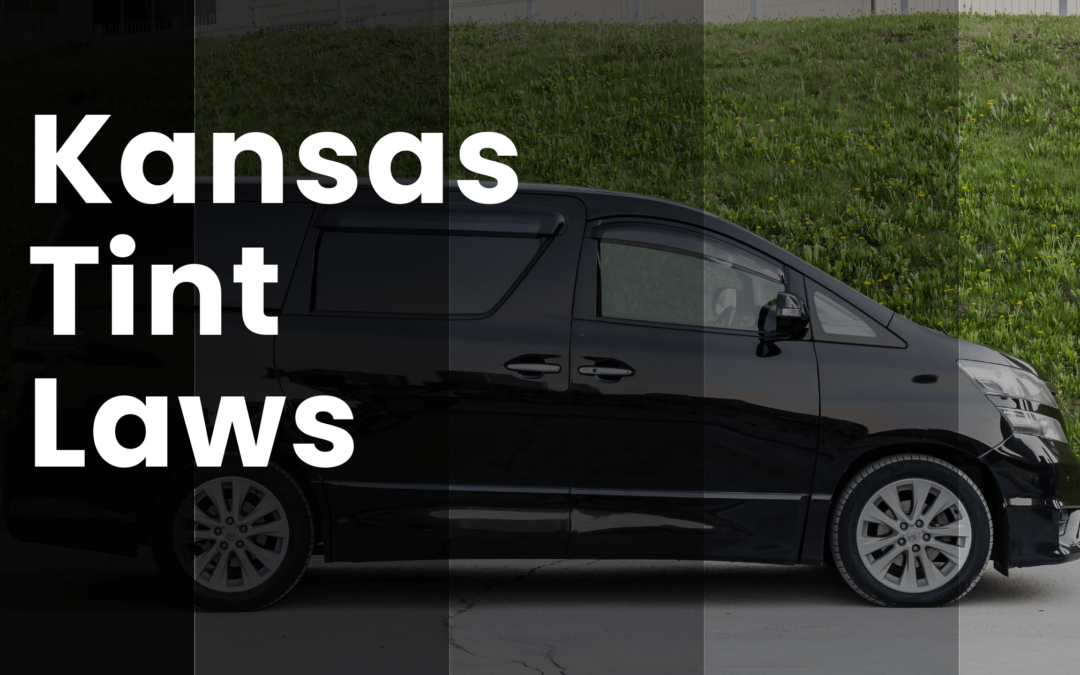Kansas Tint Laws
The Kansas tint laws detail specific automotive tint laws for various cars and SUVs. The inception of car window tinting laws in Kansas dates back to 1987. Our mission is to equip you with a comprehensive understanding of these regulations, covering crucial aspects such as allowable tint darkness, reflection standards, and supplementary rules that govern window tinting in the state.
Disclaimer
Even though I aced Commercial Law at school and strive to provide accurate and informative content, it’s important to note that I am not a legal expert. The information presented in this blog is based on my interpretation of the subject matter, and laws can vary by location and change over time. It is strongly recommended that readers verify all sources of information and consult with legal professionals or relevant authorities before making any decisions related to tint laws.
Understanding the Terminology Regarding Tint Laws
The most important part of the legislation is understanding what VLT is and how law enforcement services check or test the percentage.
What is VLT
VLT, or Visible Light Transmission, is a measure of the amount of visible light that can pass through a window tint or film. It is commonly used to determine the darkness or opacity of window tints, and it’s an important factor in window tinting laws and regulations.
VLT is typically expressed as a percentage. For example, a window tint with a VLT of 20% allows only 20% of visible light to pass through, making it relatively dark and less transparent. Conversely, a window tint with a VLT of 70% allows 70% of visible light to pass through and is much lighter and more transparent.
How do Law Enforcement services test the VLT percentage?
Window tinting laws vary by jurisdiction, and they often specify the maximum allowable VLT for different types of windows on a vehicle, such as the front windshield, front side windows, rear side windows, and rear window. These laws are designed to ensure that drivers have adequate visibility and that law enforcement can see into vehicles for safety and identification purposes. The manner that they go about testing the VLT is by using a VLT gauge/meter.
Here is a YouTube Short from @TrafficServices and @TorontoPolice showcasing the device and how it works. Even though it is in Canada, it still is helpful to understand how the tint darkness is measured.
Window Tint Darkness in Kansas:
The metric used to gauge the amount of visible light permitted through your vehicle’s windows is known as VLT (Visible Light Transmission). Kansas’ laws meticulously outline VLT percentages, which differ for sedan cars and SUVs or vans.
Kansas Car Tint Laws for Sedans:
- Windshield: Non-reflective tint is permissible above the manufacturer’s AS-1 line.
- Front Side windows: Must allow more than 35% of light to pass through.
- Back Side windows: Must allow more than 35% of light to permeate.
- Rear Window: Must allow more than 35% of light to filter through.
Tint Laws For SUVs and Vans in Kansas:
- Windshield: Non-reflective tint is allowed above the manufacturer’s AS-1 line.
- Front Side windows: Must allow more than 35% of light to pass through.
- Back Side windows: Must allow more than 35% of light to permeate.
- Rear Window: Must allow more than 35% of light to filter through.
| Type of Window | Sedans | SUVs/Vans |
|---|---|---|
| Windshield | Non-reflective tint allowed above the manufacturer’s AS-1 line | Non-reflective tint allowed above the manufacturer’s AS-1 line |
| Front Side Windows | Must allow more than 35% of light transmission | Must allow more than 35% of light transmission |
| Back Side Windows | Must allow more than 35% of light transmission | Must allow more than 35% of light transmission |
| Rear Window | Must allow more than 35% of light transmission | Must allow more than 35% of light transmission |
Window Tint Reflection in Kansas:
Window tinting serves to reflect incoming light, mitigating glare and heat. Kansas’ tint law permits a specific level of window reflection when using tint, and it is vital to adhere to these guidelines. The law specifies that for both sedans and SUVs/vans:
- Front Side windows: Must not exhibit a metallic or mirrored appearance.
- Back Side windows: Must not exhibit a metallic or mirrored appearance.
Other Kansas Window Tint Rules and Regulations:
In addition to tint darkness and reflection specifications, Kansas features several other noteworthy regulations pertaining to window tinting:
Side Mirrors
Dual side mirrors are obligatory if the rear window is tinted.
Restricted Colors
The law explicitly disallows the use of RED, AMBER, and YELLOW tint colors.
Certificates
Manufacturers of film are not compelled to certify the film they distribute within the state.
Stickers
While not mandatory, state law recommends stickers for identifying legal tinting.
Medical Exceptions
Kansas law does not permit medical exemptions for specialized tint.
Regulations for Out-of-State Drivers
The same regulations apply to out-of-state drivers as they do for drivers living in the State.
If you are from States such as Oklahoma, Colorado, Nebraska, and Missouri, you are expected to abide by these laws and regulations.
Penalties
Violations of tinting laws are classified as Class C misdemeanors.
It’s essential to recognize that interpretations of Kansas’ tinting laws and regulations may diverge depending on your county or place of residence. To ensure full compliance, we strongly advocate cross-referencing this information with your local DMV or law enforcement authorities.
Our information regarding window tint laws in Kansas was last updated in 2023. We take pride in being a trusted industry leader, dedicated to providing accurate and current information about window tint laws. If you encounter any inaccuracies or outdated data, please do not hesitate to reach out. Your trust in our resources is of paramount importance, and we are steadfast in delivering the most reliable information available.

